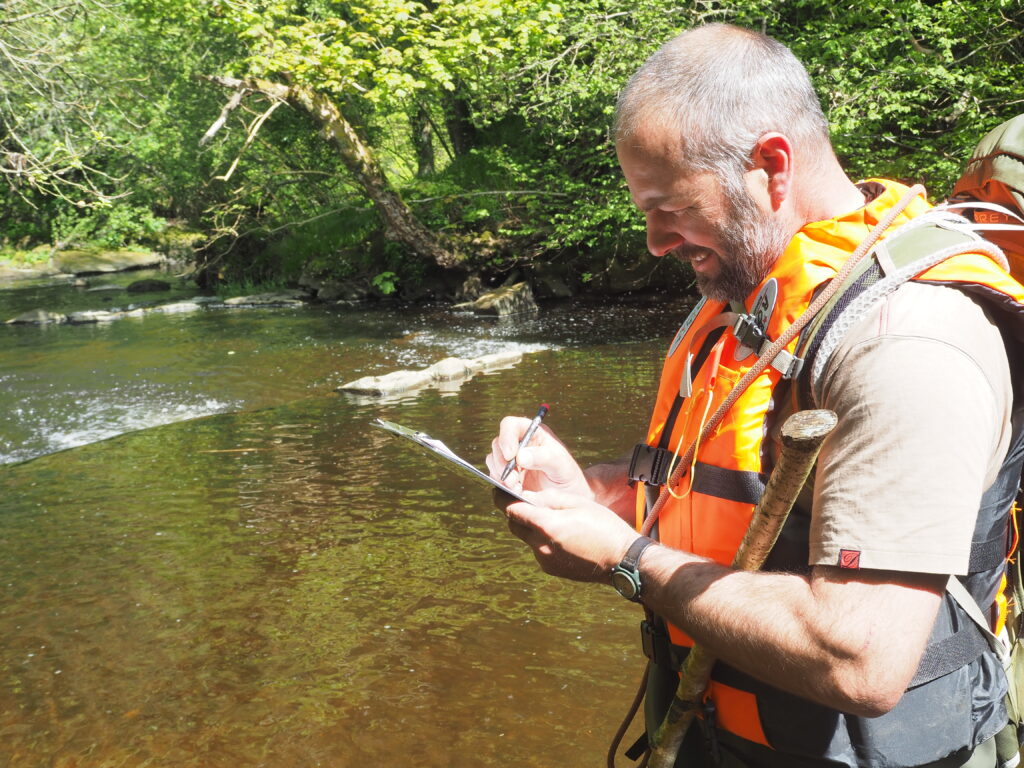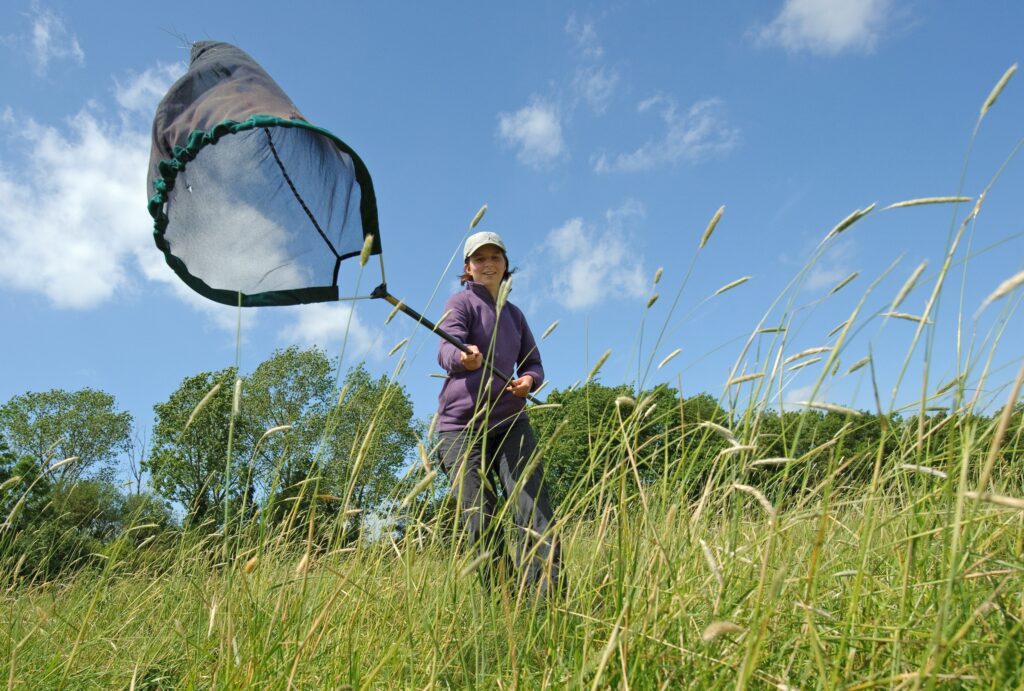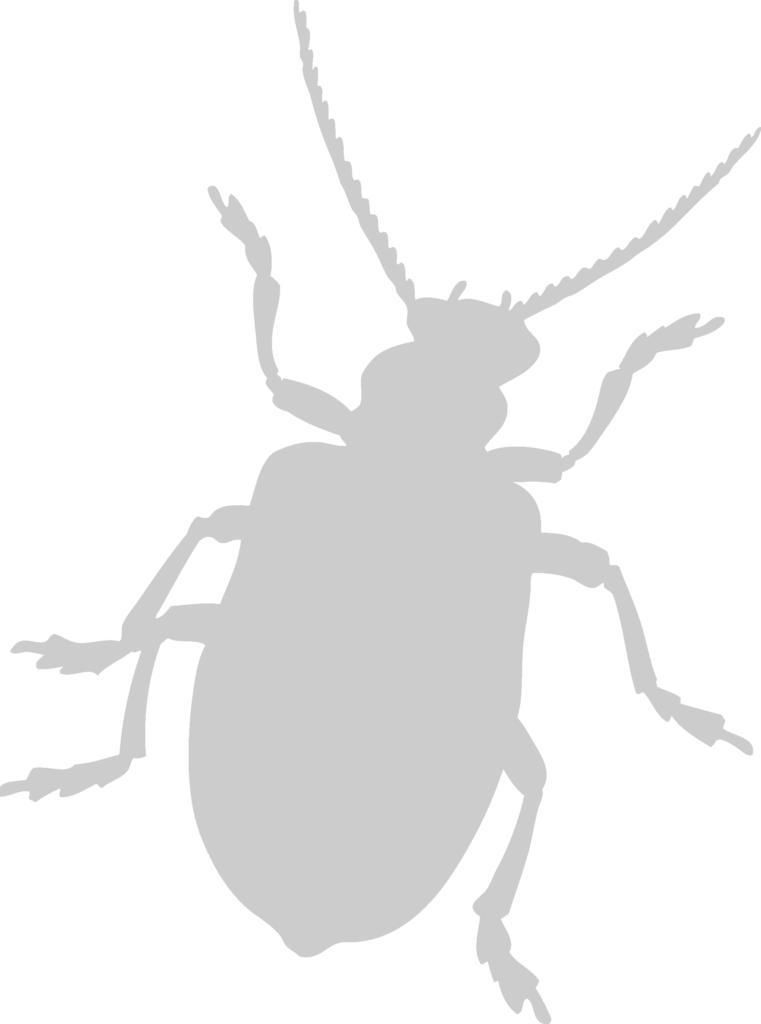Wildlife surveys are used to observe, count, and record information about the wildlife in your local area. There are lots of different surveying and recording methods but all that is needed is some basic knowledge of different species and time. How you survey wildlife is up to you but it’s important to record what you find. Recording your results means you can check back after future surveys and see what has changed on your site.
Things to consider…
- Decide on what question your survey is trying to answer. Are you looking to find out what species live in your area? Or are you trying to find out how species-rich a specific habitat is? This will help you plan out what survey method to use.
- Consider the species you are surveying. Some species move around a lot while others tend to stay in a smaller area. A lot of moth species are nocturnal so you’ll need to carry out your surveys at night. In contrast, lots of bird species are most active around dawn.
- Remember to record your findings! There’s a good chance you’ll want to survey again in the future. Recording your data means that you can track the changes and see if species are becoming more abundant, or if there is a population decline.
- Some species are protected by law. In Scotland, protected species range from barn owls and bats through to frogs and flowers. You can find out more about wildlife law in the UK on the Wildlife Trusts website.
Survey guides
We’ve put together quick guides for a few different surveying methods. These are some of the most common surveying methods and don’t require much equipment or experience.
- Sweep netting is used to survey for insects in areas of long grass. You can download our guide here.
- Moth trapping is used for surveying moths and other nocturnal insects. You can download our guide here.
- Tree beating is used to survey insects in trees and bushes. You can download our guide here.
- Pitfall traps are used to survey ground-dwelling insects in a small area. You can download our guide here.
- The Natural History Museum also have a handy guide which includes a short video on how to make a pitfall trap.
- Pond dipping is a common activity but can also be used to survey freshwater habitats. You can download our guide here.
- Kick surveying is used in streams and small rivers to survey invertebrate. You can download our guide here.
Useful links


- Shropshire Wildlife Trust have a great set of guidelines for river monitoring. The guide includes monitoring freshwater invertebrate, chemical analysis and river habitat surveying.
- NHBS is a good place to go for surveying equipment and identification resources. They stock a huge range of products from books to bat detectors!
- The RSPB’s Big Garden Birdwatch is one of the most well-known citizen science surveys in the UK. It runs each year and is really simple to take part in. You can also view results from previous years on the RSPB website.
- Saving Scotland’s Red Squirrels run the Great Scottish Squirrel Survey each year. You can report your squirrel sightings year round via the website and the Great Scottish Squirrel Survey takes place in Red Squirrel Week which is usually in October each year. The results from last year’s survey are also available to view.
- The Big Butterfly Count is run by Butterfly Conservation and takes place for several months each summer. The survey itself is straightforward and can be done on the free smartphone app. Butterfly Conservation also provide free identification resources. The results are collected and then displayed on an interactive map.
- The UK Pollinator Monitoring Scheme (often called UK POMS) aims to establish how pollinator populations are changing across the UK. It’s run by the Centre for Ecology and Hydrology (CEH) alongside a range of partners including the Scottish Government. The method uses Flower Insect Timed Counts or FIT counts which are straight-forward 10 minute surveys. There are lots of useful resources on the UK POMS website.
- If you’d like to learn more about wildlife surveying and other aspects of taking positive action for nature, you can now join our free online Pioneers Programme course. Find out more about the programme and register here.
